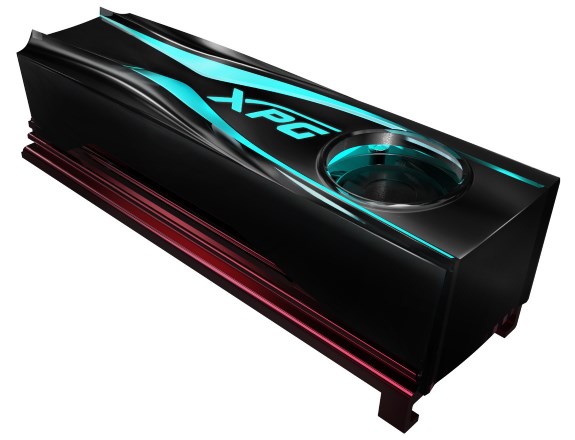
Posted on Tuesday, November 21 2017 @ 13:07 CET by Thomas De Maesschalck
If you ever feel the need to cool your M.2 2280 SSDs and pimp them with RGB LEDs, you can check out the new XPG STORM heatsink add-on from ADATA. This product promises to lower the temperature of your M.2 SSD and it has built-in RGB LEDs so you can spice up your case. Is there anything left that hasn't received the RGB LED treatment yet?

STORM features an aluminum heatsink and with a fan. It can be easily affixed to any compatible SSD to provide powerful cooling. Lower SSD temperatures promote more stable storage and system performance, in addition to the XPG-styled STORM heatsink with its colorful RGB lighting contributing to attractive, gaming-themed PC setups.
Lower temperatures complement high speeds
While M.2 2280 PCIe SSDs are currently the fastest on the market, their high data rates also mean considerable heat buildup. Without a heatsink, accumulating heat can compromise performance and accelerate SSD aging. STORM includes an aluminum heatsink that fits on any M.2 SSD without causing overhead issues. Together with the heatsink, STORM uses a fan to circulate cool air and reduces temperature by at least 25% when compared with bare M.2 SSDs.
RGB style brings out the best in SSDs
STORM includes RGB lighting elements that are sure to be appreciated by case modders and PC DIY enthusiasts. While the M.2 slot is usually almost hidden among other, larger components on the motherboard, with its RGB heatsink STORM indeed stands out. It comes with default RGB lighting modes and also supports several apps, such as ASUS AURA Sync, Gigabyte RGB Fusion Ready, and MSI Mystic Light Sync, for maximum convenience and customizability.
Easy installation on any compatible drive
Thanks to pre-applied thermal compound, STORM can be quickly placed on any M.2 2280 SSD or card. No screws or complicated procedures required, and no BIOS adjustments needed. Once in place, STORM begins to do its work lowering temperatures and improving storage and system stability.
